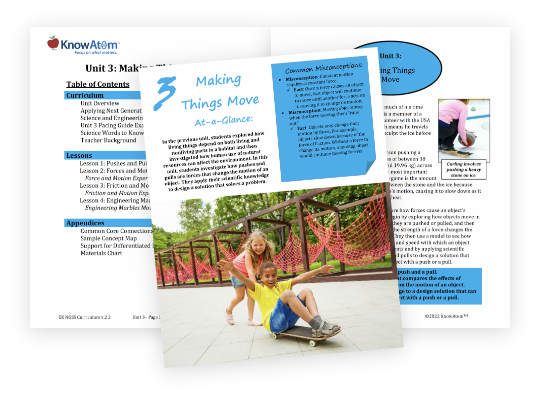Science background provides teachers with more in-depth information about the phenomena students explore in this unit. Below is an excerpt from the science background information on engineering filtration devices.
As water cycles through the Everglades, the Everglades act as natural filters, purifying the water as it moves through. Filtration is the process of separating solid matter from a fluid by having the fluid pass through the pores of another substance, called a filter.
As rain falls, some of the water is absorbed into the ground. Whatever doesn’t absorb into the ground or get used by plants and animals can become stormwater runoff. Runoff happens when water, along with the substances carried in it, flow from the surface of an area of land, a building or structure. This runoff carries with it sediment from the ground, as well bacteria, fertilizers, pesticides, oil, and other contaminants.
As water moves from Earth’s surface through the Everglades, it is filtered, becoming purer. For example, some plants in the Everglades take pollutants into their roots and change them into less harmful substances. By the time water has moved through the Everglades, many pollutants have been removed.
However, scientists realized that human activity was causing so many pollutants to enter into the water that the Everglades couldn’t filter them all out. This is an example of an environmental threat, which is anything that can cause harm to the environment.
In recent years, scientists have focused on conserving the Everglades. Conservation is the weighing of human needs against the needs of the environment to create a sustainable way for humans to live off of natural resources. Conservation comes in many forms. In the Everglades, it has included setting aside some of the land as a national park and cleaning up polluted rivers.
Teams of conservation scientists and engineers are working on the problem of water pollution in the Everglades. Engineering is different from science, although science and engineering are connected. Scientists use experiments to gain new knowledge. Engineers use that scientific knowledge and mathematics to solve a problem by creating new technologies.
Similar to how scientists follow a process to answer a question, engineers also follow a process that often involves eight general steps to guide them as they create new technologies to solve problems.The engineering process always begins with a problem.
In the Everglades, one problem was water pollution that harmed the surrounding environment. When engineers are defining a problem, they include the criteria. The criteria are the needs the solution must meet. They also include the constraints. Constraints are ways the solution is limited. Materials and cost are two common engineering constraints.
Once they have identified the problem, engineers need to research the problem to find out what is known about the problem. For example, engineers researched where the main sources of pollution in the Everglades were coming from. They realized that much of the pollution came from fertilizers used by farmers and polluted stormwater runoff.
They also researched the filtration benefits of the Everglades. For example, engineers need to know that porous materials allow water to flow through them easily. They also need to know that some materials filter water better than other materials.
After engineers have researched their problem, they survey the available materials. This survey includes a sketch of the material, as well as how much of the material they have available and the properties of that material.
For example, engineers need to think about the porosity of the materials they are planning to use. The smaller the pore size is, the purer the water will be because everything that cannot fit through the pores will be filtered out.
Engineers then come up with possible solutions for how the problem can be solved with the available materials. For example, many communities use filters made of sand, gravel, soil, or other porous material around storm drains to treat stormwater runoff. As runoff water enters the storm drain, the filter can strain out pollutants before they enter the storm drain. This solution helps to prevent pollution from becoming part of the water cycle.
The next step is to diagram and build a prototype. A prototype is a scaled-down first draft of a technology. Once built, engineers test the prototype. They use the tests to gather data, which are measurements and observations that capture how well the prototype solves the problem during testing.
Finally, engineers use their data to decide whether to refine or replicate. The data tell engineers whether their prototype technology solved the problem.








